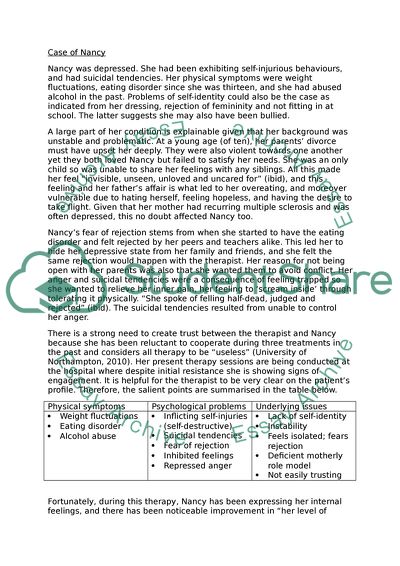Cite this document
(Psychological Analysis of Case of Nancy Study Example | Topics and Well Written Essays - 1500 words, n.d.)
Psychological Analysis of Case of Nancy Study Example | Topics and Well Written Essays - 1500 words. https://studentshare.org/psychology/1734567-case-of-nancy
Psychological Analysis of Case of Nancy Study Example | Topics and Well Written Essays - 1500 words. https://studentshare.org/psychology/1734567-case-of-nancy
(Psychological Analysis of Case of Nancy Study Example | Topics and Well Written Essays - 1500 Words)
Psychological Analysis of Case of Nancy Study Example | Topics and Well Written Essays - 1500 Words. https://studentshare.org/psychology/1734567-case-of-nancy.
Psychological Analysis of Case of Nancy Study Example | Topics and Well Written Essays - 1500 Words. https://studentshare.org/psychology/1734567-case-of-nancy.
“Psychological Analysis of Case of Nancy Study Example | Topics and Well Written Essays - 1500 Words”. https://studentshare.org/psychology/1734567-case-of-nancy.


